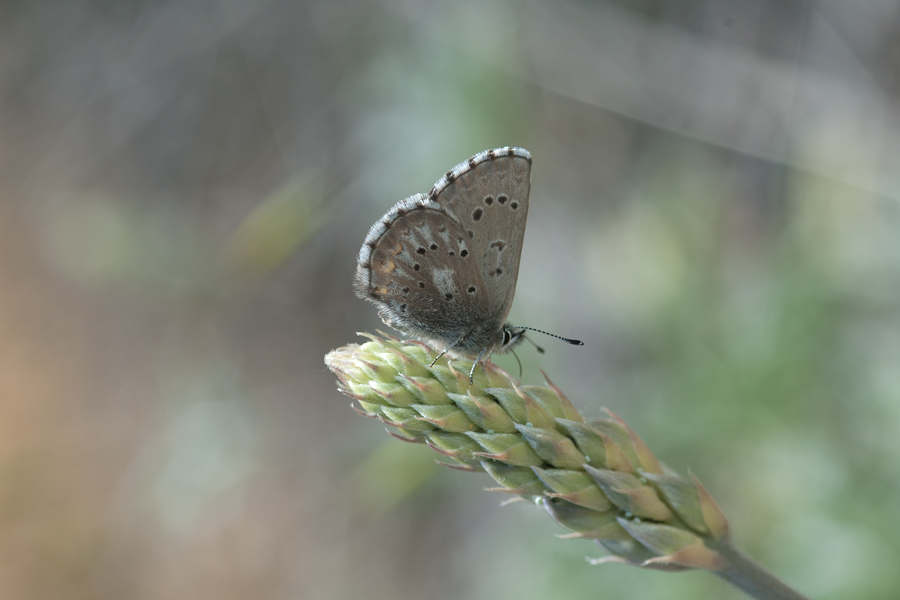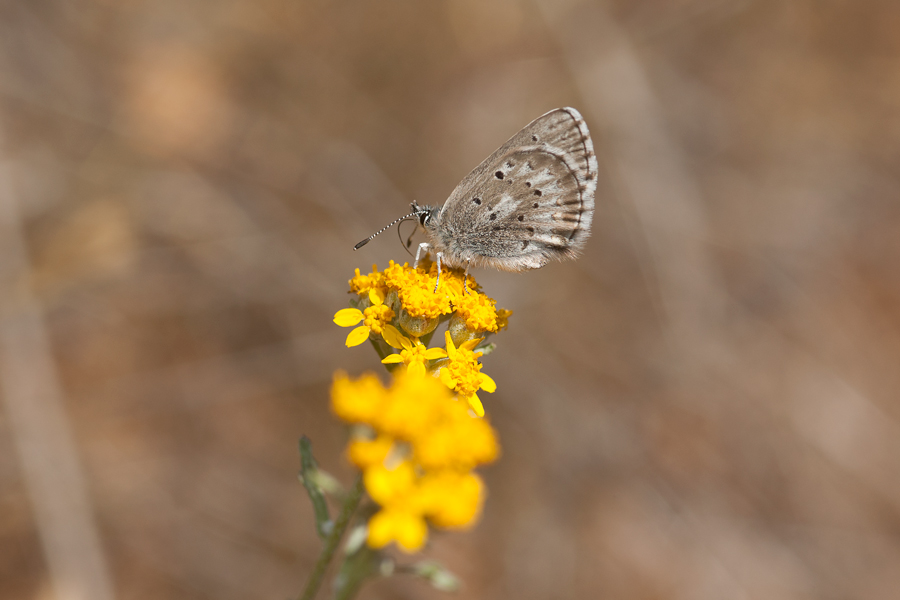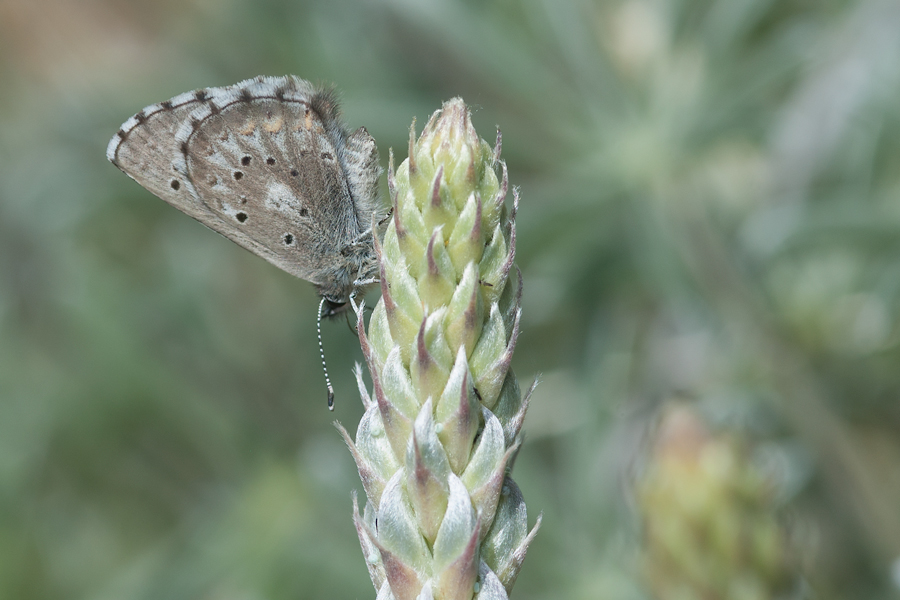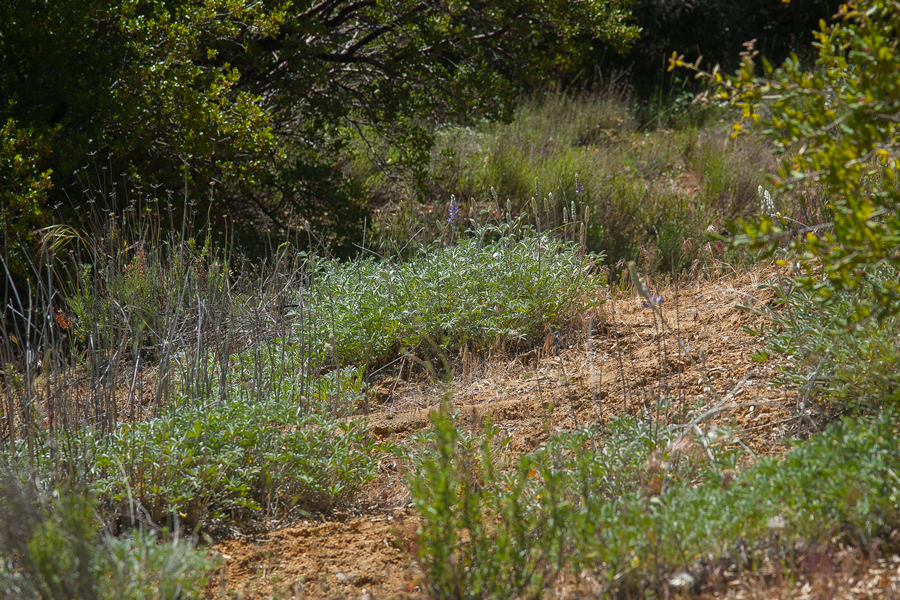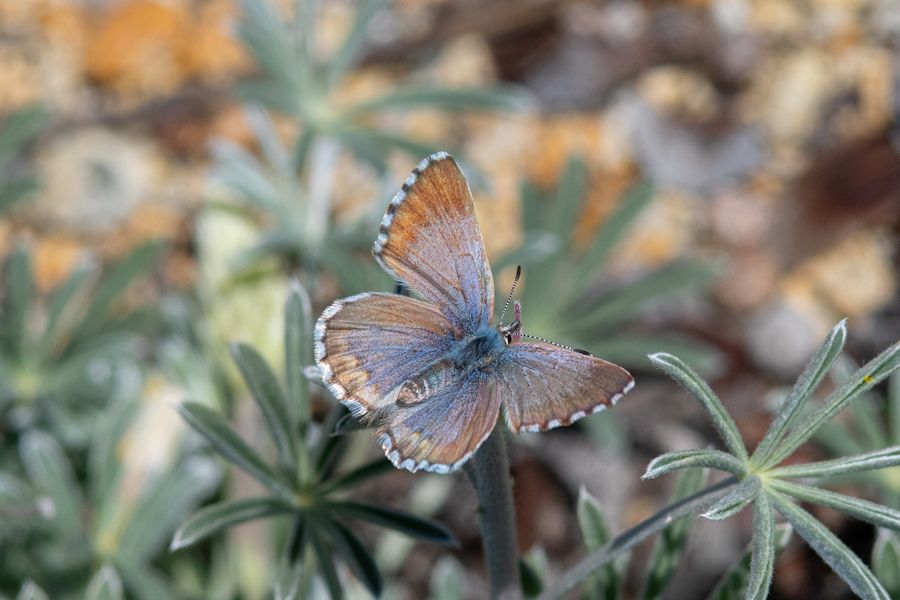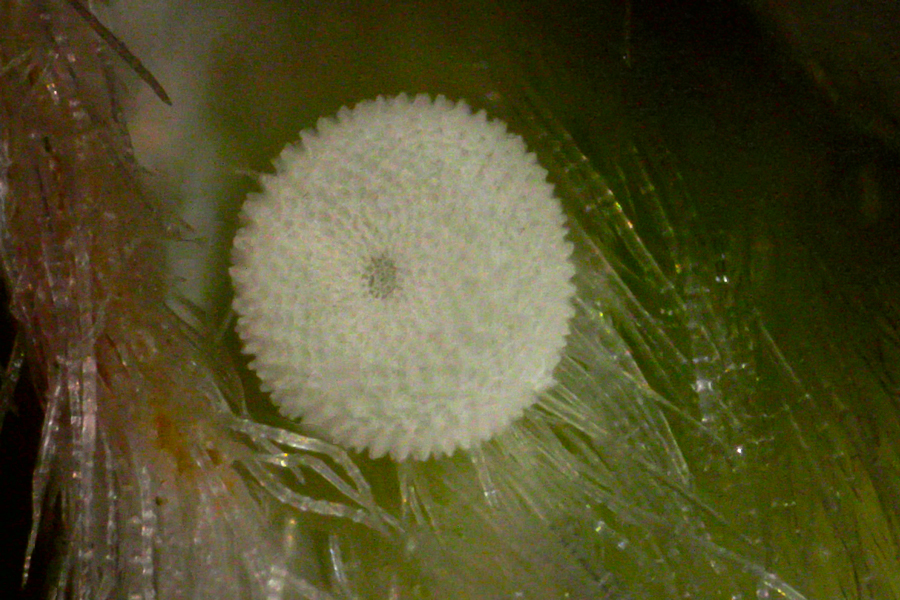Glaucopsyche piasus umbrosa
Smoky Arrowhead Blue
Another subspecies named in the 1998 Systematics publication (pp.172-3). The types were collected by John Emmel in the mid-1980s on a slope two-tenths of a mile east of Big Laguna Lake in the Laguna Mountains. He found them associated with Lupinus formosus. What sets these apart from other arrowhead blues is the darker ventral ground color, with the white "arrowheads" less developed. They fly in a single brood in the spring, with most records from April to about mid-May. As with the others in this species, the eggs are placed in the lupine flower buds, larvae emerge and feed to pupation, and overwinter as chrysalises. Eggs are easily found as shown below.
Glaucopsyche piasus umbrosa, the 'smoky' arrowhead blue, was flying off Old Highway 80 near Guatay in rural San Diego Country on May 11, 2013. Note the eggs!
Another umbrosa above and below on the same day. The host is a lupine - Lupinus formosus.
Special thanks to Andrew Kim for the location.
Lupinus formosus (western lupine) patches are where to look for this little blue butterfly.
The population at Lake Hemet looks to me most like subspecies umbrosa, so I'm putting this photograph here. According to the original description, populations in the San Jacintos are intermediate between umbrosa and sagittigera. This female was among many at Lake Hemet among the Lupinus excubita on May 12, 2024.
Females place eggs mostly in the crevices of the lupine buds. Boisduval's blues were on the same plants at this time, but females of that species were ovipositing on the stems of leaves lower down the plant. This is a composite (photo stack) at 220x magnification. May 12, 2024.
©Dennis Walker
